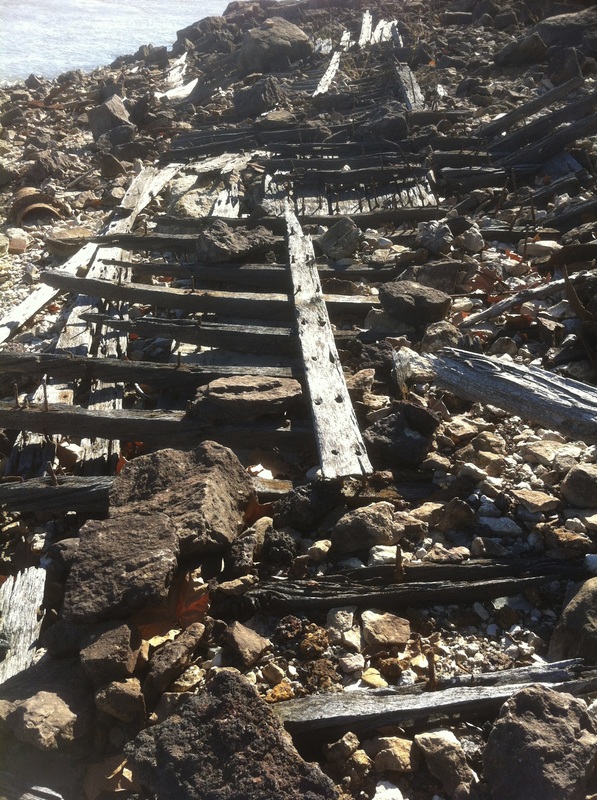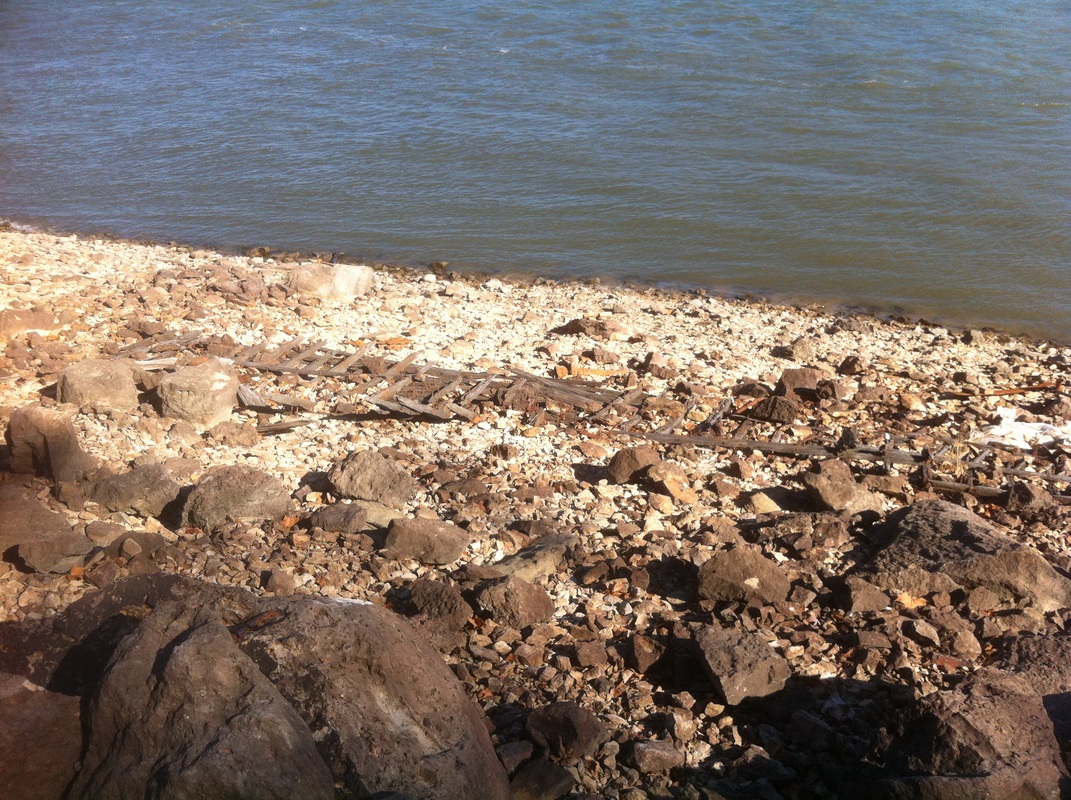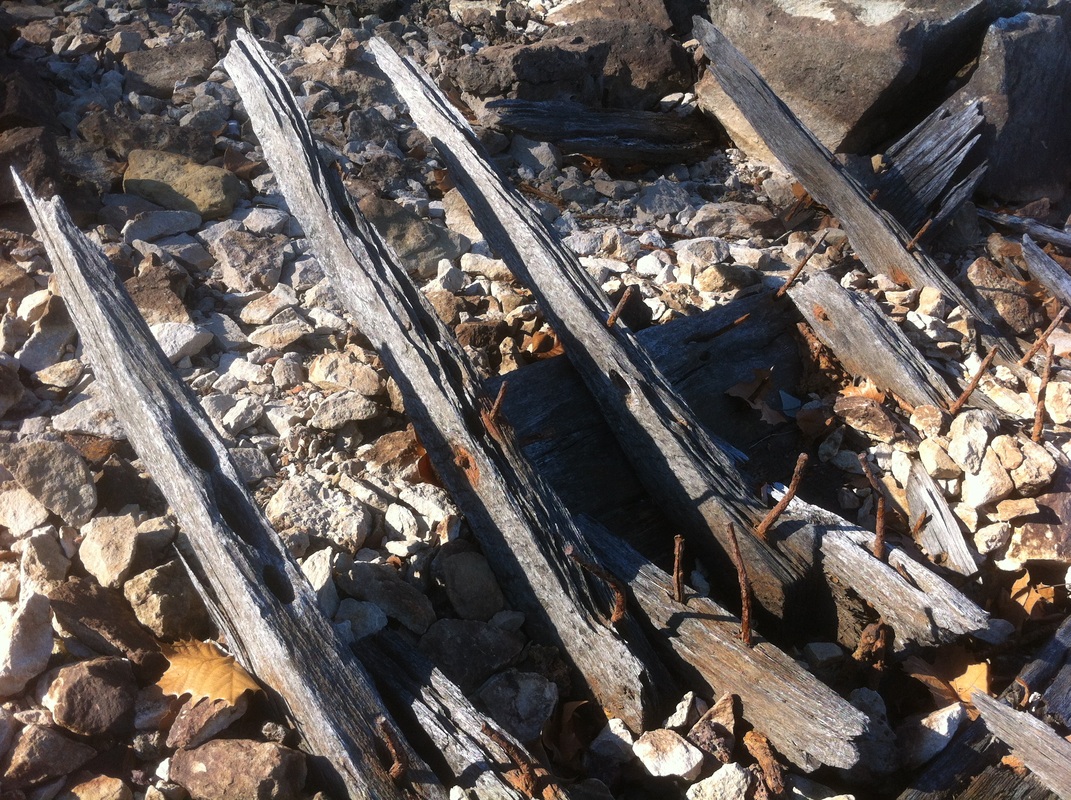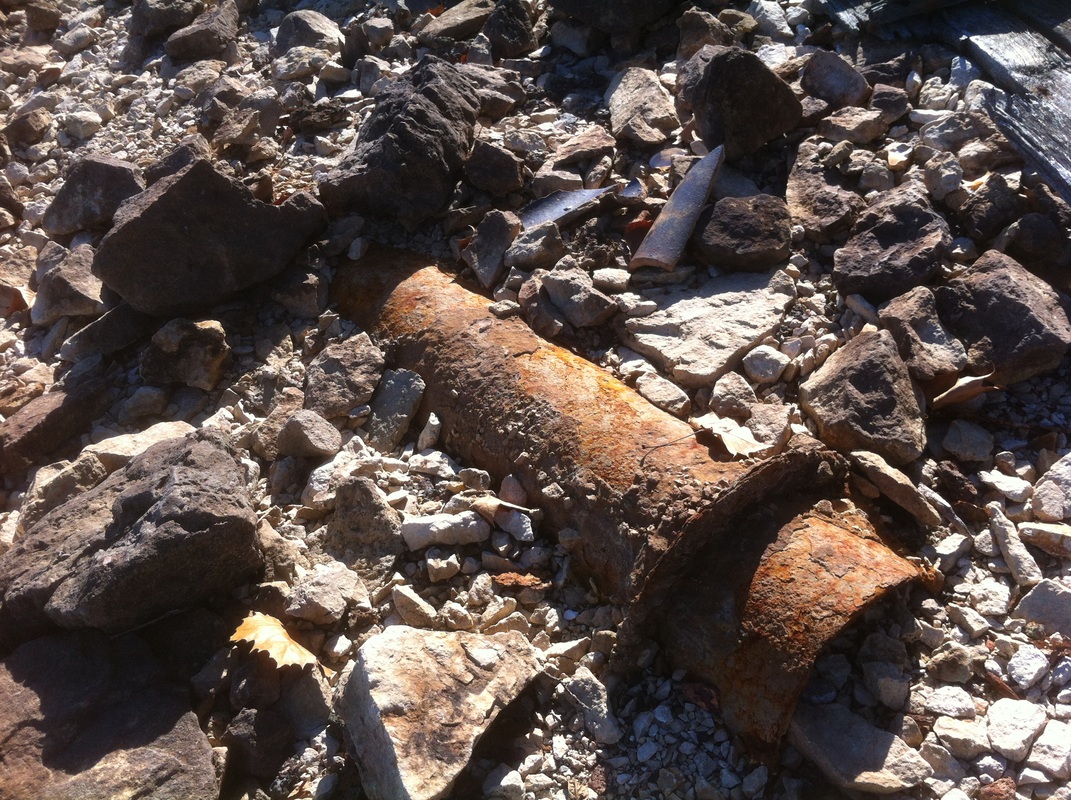It may take me a while to get this article completed but I wanted to at least get something down as I hadn't had much time to write. This little excursion I took was in the Fall of 2012 when my wife had a meeting at Fredricktown, Missouri on a Saturday. I thought that this might be a great time to do a little investigating into whether I could find the remains of the Company's boat the City of Saltillo. My uncle has the full write up in the "Company History" link above telling the story of the tragic wreck and loss of lives. We knew from reports that when the Mississippi River was very low that the remains of the boat were exposed on the Missouri bank. But we didn't exactly know where it was. We had just little pieces of information that put the boat just downstream from Suphur Springs, Missouri. How far is "just downstream?" After dropping my wife off at her meeting I headed north and east and made my way to the town of Sulphur Springs. The town is right on the river and as I arrived I happened to meet a nice lady who lives there. I told her what I was looking for and she said that I needed to talk to a gentleman who lives in the house I parked near. He had been to the wreck and could give me better directions. She introduced me to the gentleman and he told me that it was probably 2 miles downriver to the site. There is my "just downstream." I started walking the railroad tracks and tried to guess my distance with my iPhone using the GPS. When I thought I was getting close I would look down on the shoreline to see if I could find any remains that might be obvious. Finally I climbed down a rather steep bank and began walking a large area of shoreline that had been exposed due to the drought and low water level. There was all kinds of trash from household goods all the way to the remains of a car. And just as I turned to continue down the shore, right in front of me was the remains of the hull. The picture above was basically my first view of her. As would be expected, there really isn't much left of her but what was there was quite fascinating. Mostly just ribs from the hull and a little of the outside planking. Lots of large spikes and other small pieces of metal. There were a few larger pieces of metal which must have been tied to the boilers I presumed.
Here is a shot looking down slope toward the river with the boats remains clearly exposed on shore.
According to Way #1134 the City of Saltillo was about 200 feet long by 37 feet wide. It was amazing how I just kept walking down the gravel bar and there was more and more boat. The boat sits with the stern downstream which is probably how she ended up after hitting the bank. Some sources say she started sinking at which point the crew put the stage off the starboard side of her and as people were crossing to shore the stern got pulled out into the river by the current and pivoted on the bow essentially knocking the stage off the shore. She probably moved downstream slightly aided by the current and then sank enough that she was stuck. The bank there is fairly steep so there was concern that she would roll over. This picture shows her with a big list to the starboard side.
According to Way #1134 the City of Saltillo was about 200 feet long by 37 feet wide. It was amazing how I just kept walking down the gravel bar and there was more and more boat. The boat sits with the stern downstream which is probably how she ended up after hitting the bank. Some sources say she started sinking at which point the crew put the stage off the starboard side of her and as people were crossing to shore the stern got pulled out into the river by the current and pivoted on the bow essentially knocking the stage off the shore. She probably moved downstream slightly aided by the current and then sank enough that she was stuck. The bank there is fairly steep so there was concern that she would roll over. This picture shows her with a big list to the starboard side.
The picture shows a barge which was brought down and tied up on the upstream side to help with the salvage of the boat.
Like I said there really isn't much of the boat left but as I got to the stern there were parts of the wheel that were visible. A couple of the spokes of the wheel still had the hardware that held the buckets in place.
Like I said there really isn't much of the boat left but as I got to the stern there were parts of the wheel that were visible. A couple of the spokes of the wheel still had the hardware that held the buckets in place.
Also seen was a band of steel which sandwiched the wood which created the round shape of the wheel. You can see a part of that band in this photo.
I didn't have a lot a time to stick around and explore because I needed to get back to Fred'town to pick up my wife. But I plan on coming back up the next time the river is low so I can see what else remains on the rocky shore.










 RSS Feed
RSS Feed